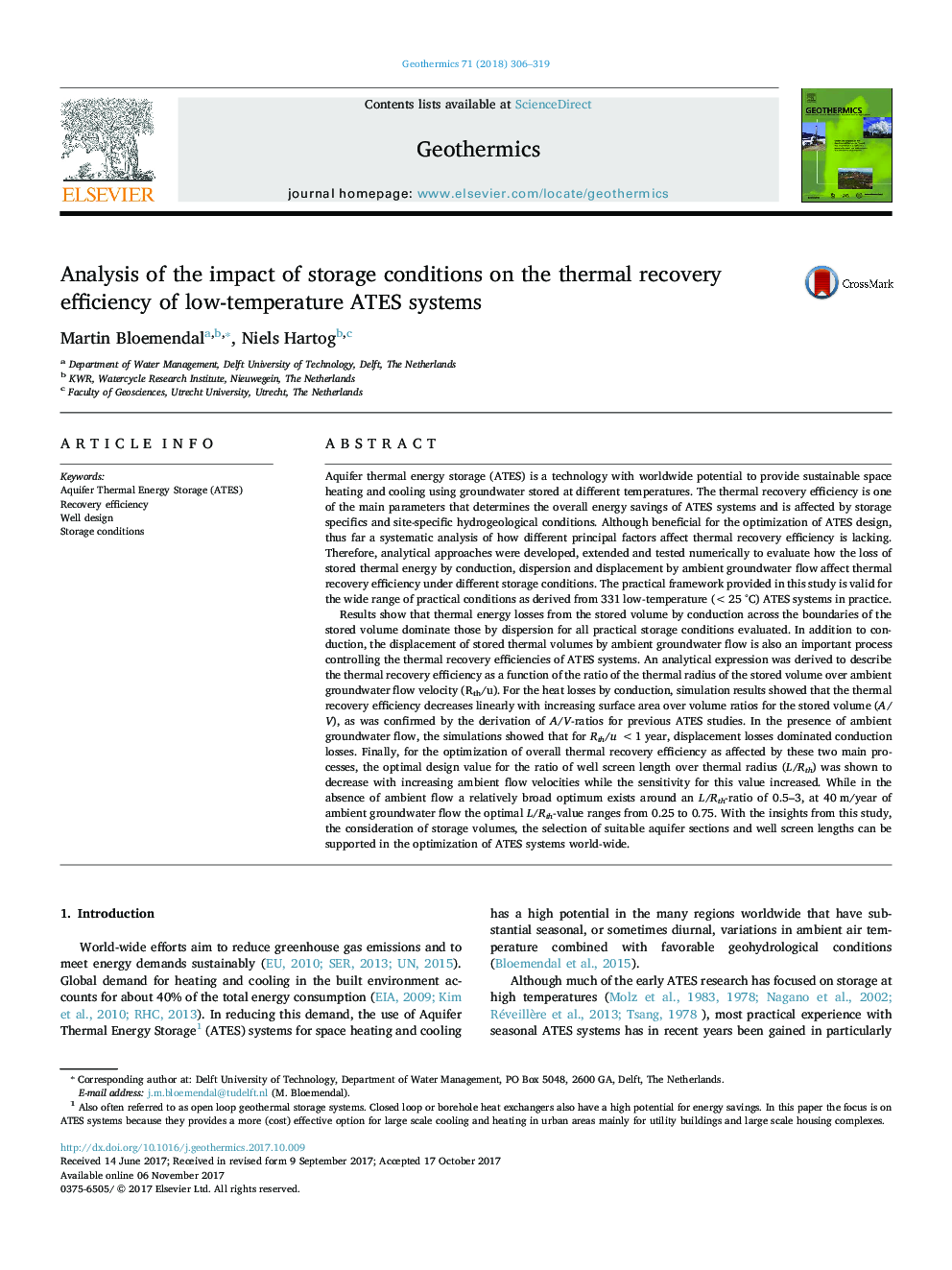| Article ID | Journal | Published Year | Pages | File Type |
|---|---|---|---|---|
| 8088683 | Geothermics | 2018 | 14 Pages |
Abstract
Results show that thermal energy losses from the stored volume by conduction across the boundaries of the stored volume dominate those by dispersion for all practical storage conditions evaluated. In addition to conduction, the displacement of stored thermal volumes by ambient groundwater flow is also an important process controlling the thermal recovery efficiencies of ATES systems. An analytical expression was derived to describe the thermal recovery efficiency as a function of the ratio of the thermal radius of the stored volume over ambient groundwater flow velocity (Rth/u). For the heat losses by conduction, simulation results showed that the thermal recovery efficiency decreases linearly with increasing surface area over volume ratios for the stored volume (A/V), as was confirmed by the derivation of A/V-ratios for previous ATES studies. In the presence of ambient groundwater flow, the simulations showed that for Rth/u <1 year, displacement losses dominated conduction losses. Finally, for the optimization of overall thermal recovery efficiency as affected by these two main processes, the optimal design value for the ratio of well screen length over thermal radius (L/Rth) was shown to decrease with increasing ambient flow velocities while the sensitivity for this value increased. While in the absence of ambient flow a relatively broad optimum exists around an L/Rth-ratio of 0.5-3, at 40 m/year of ambient groundwater flow the optimal L/Rth-value ranges from 0.25 to 0.75. With the insights from this study, the consideration of storage volumes, the selection of suitable aquifer sections and well screen lengths can be supported in the optimization of ATES systems world-wide.
Related Topics
Physical Sciences and Engineering
Earth and Planetary Sciences
Geochemistry and Petrology
Authors
Martin Bloemendal, Niels Hartog,
